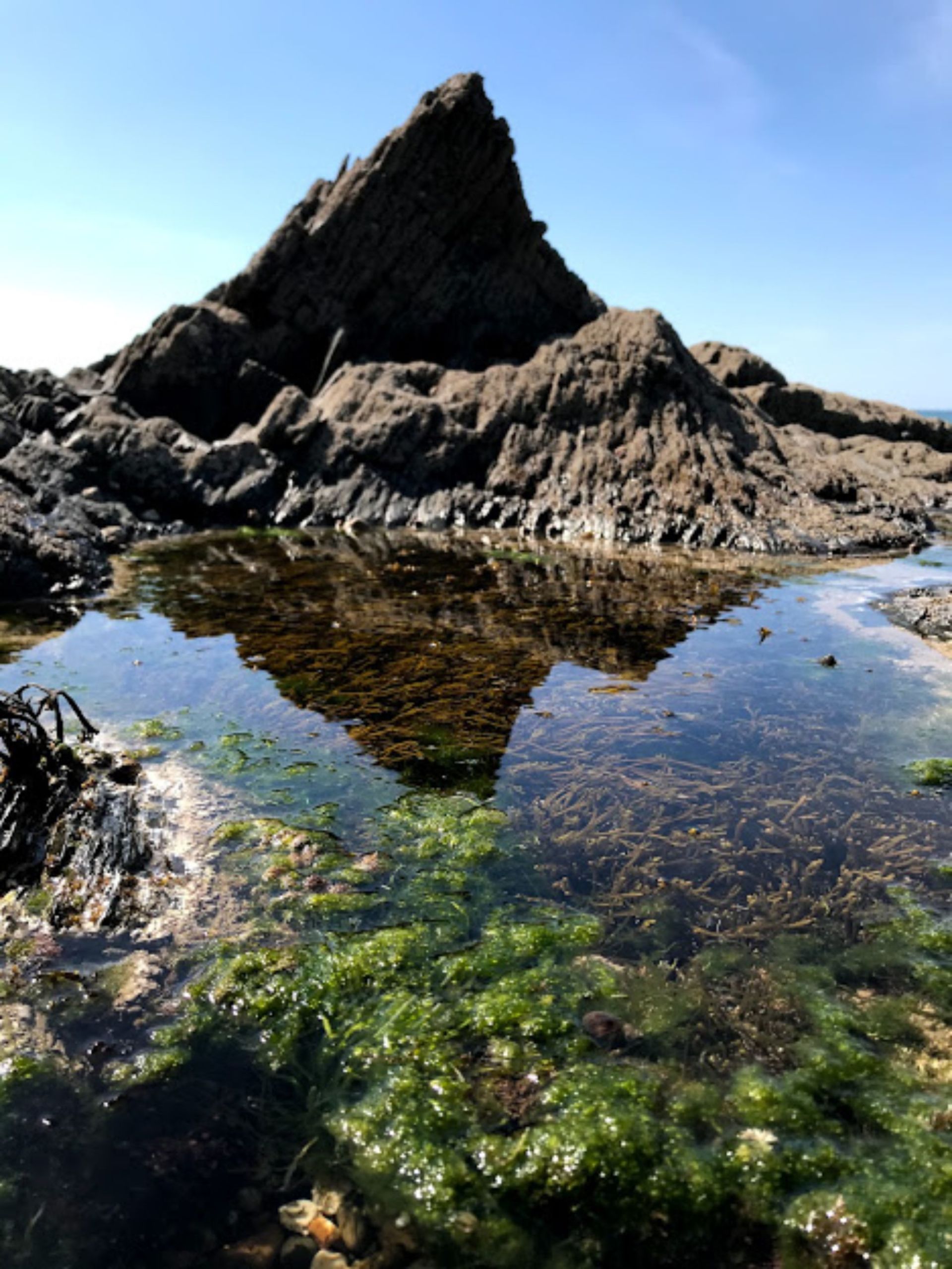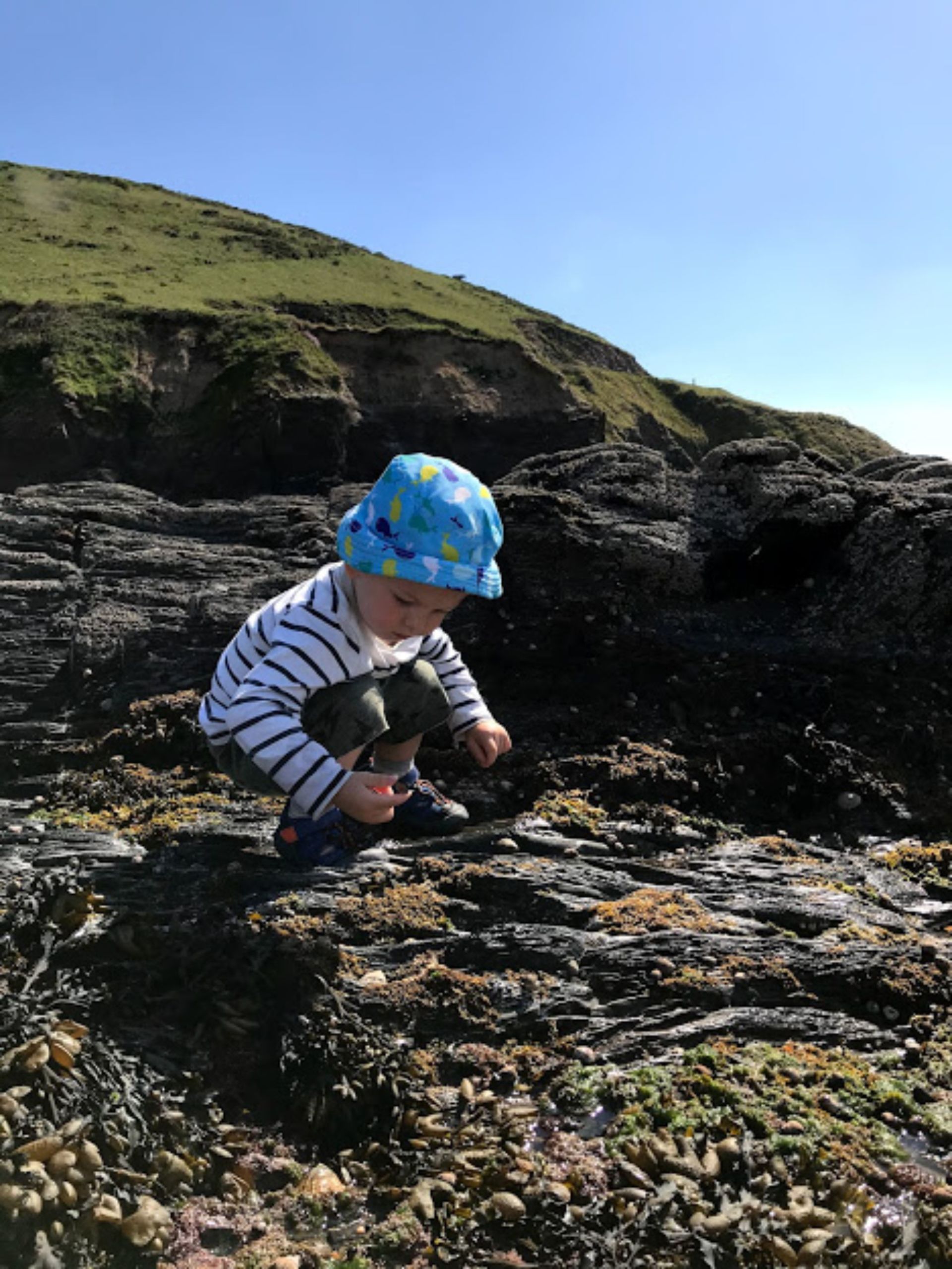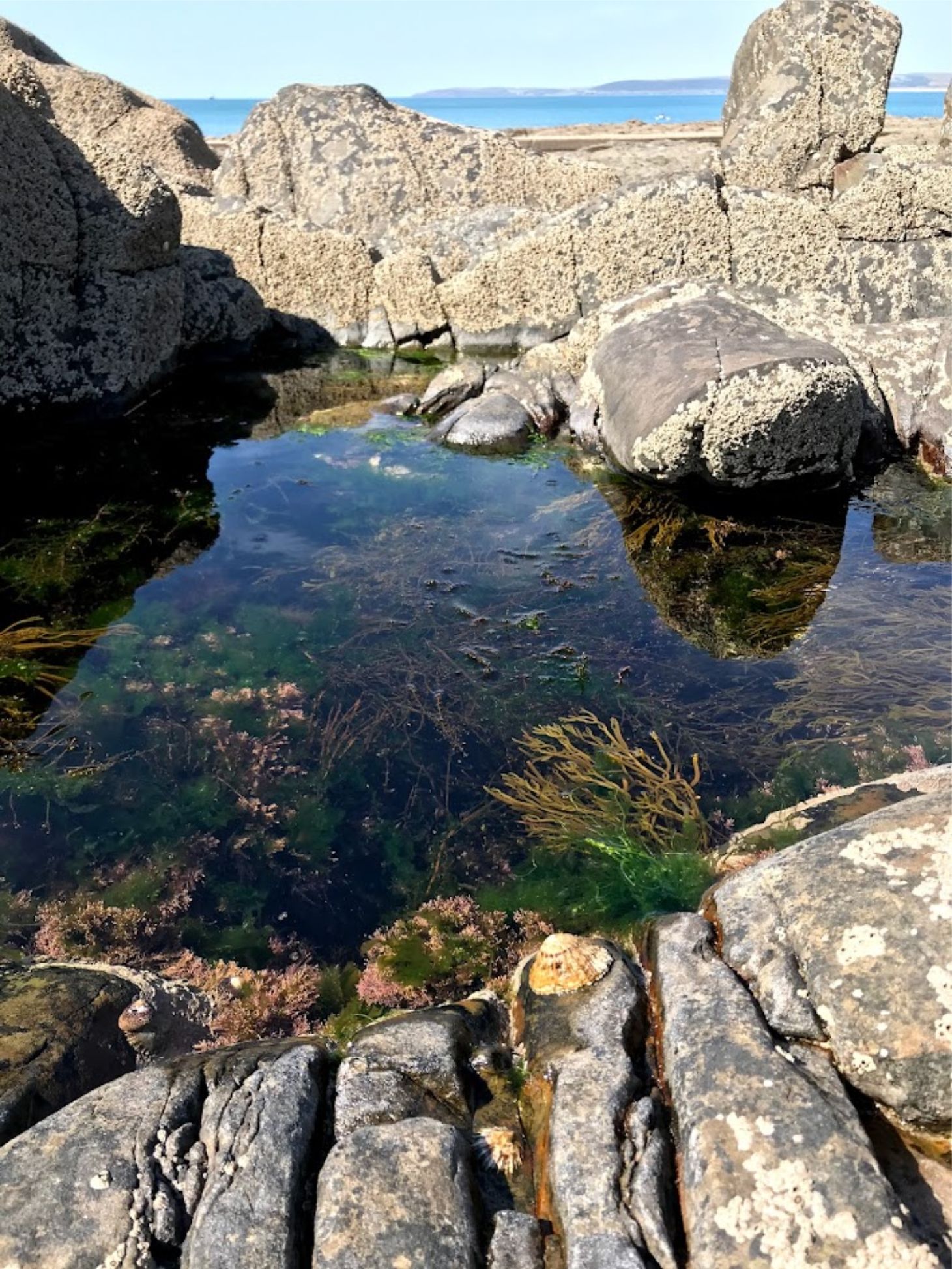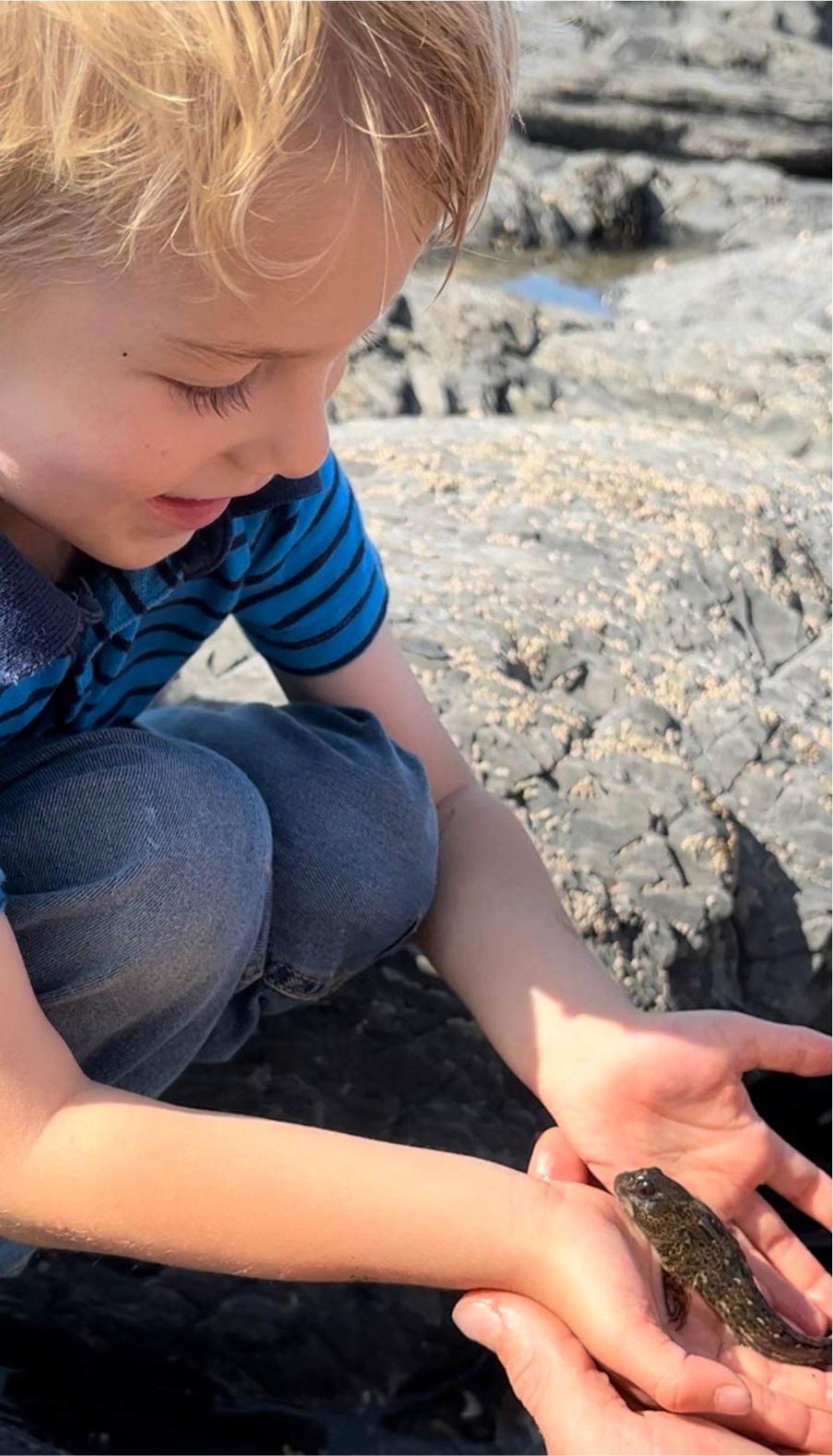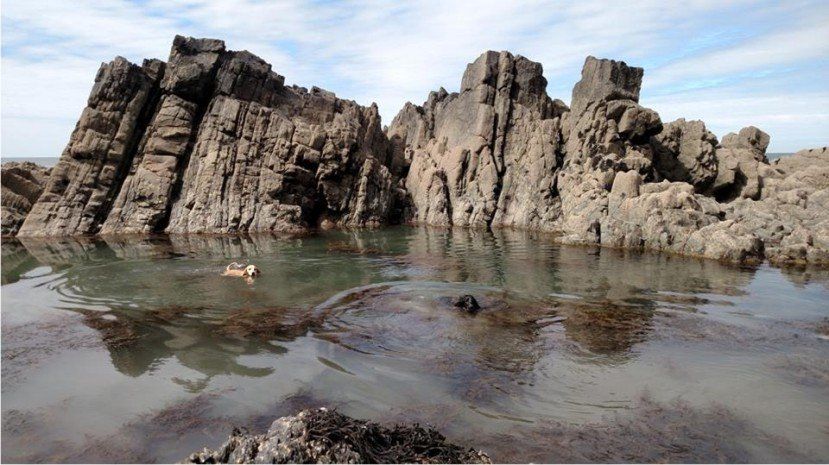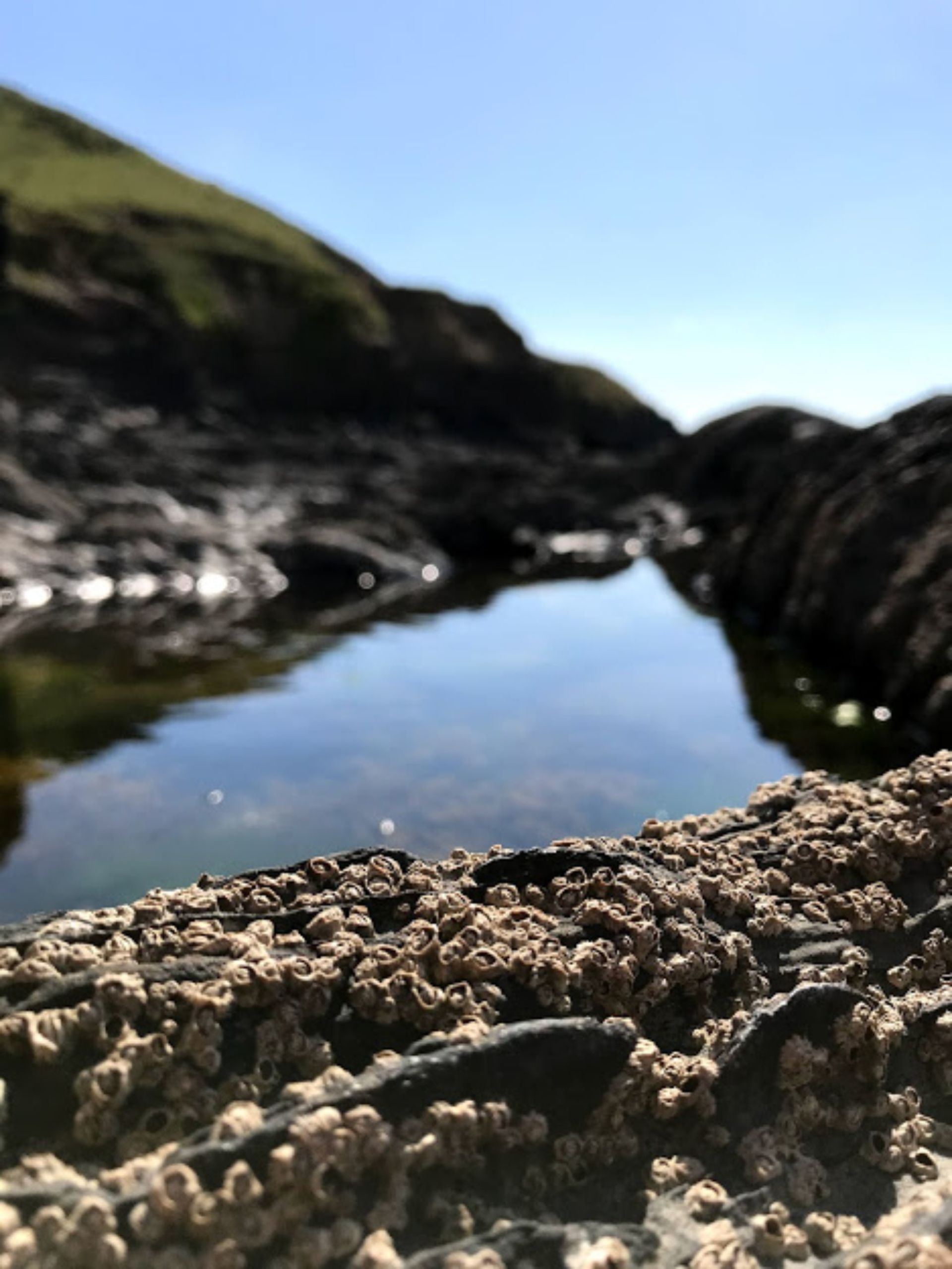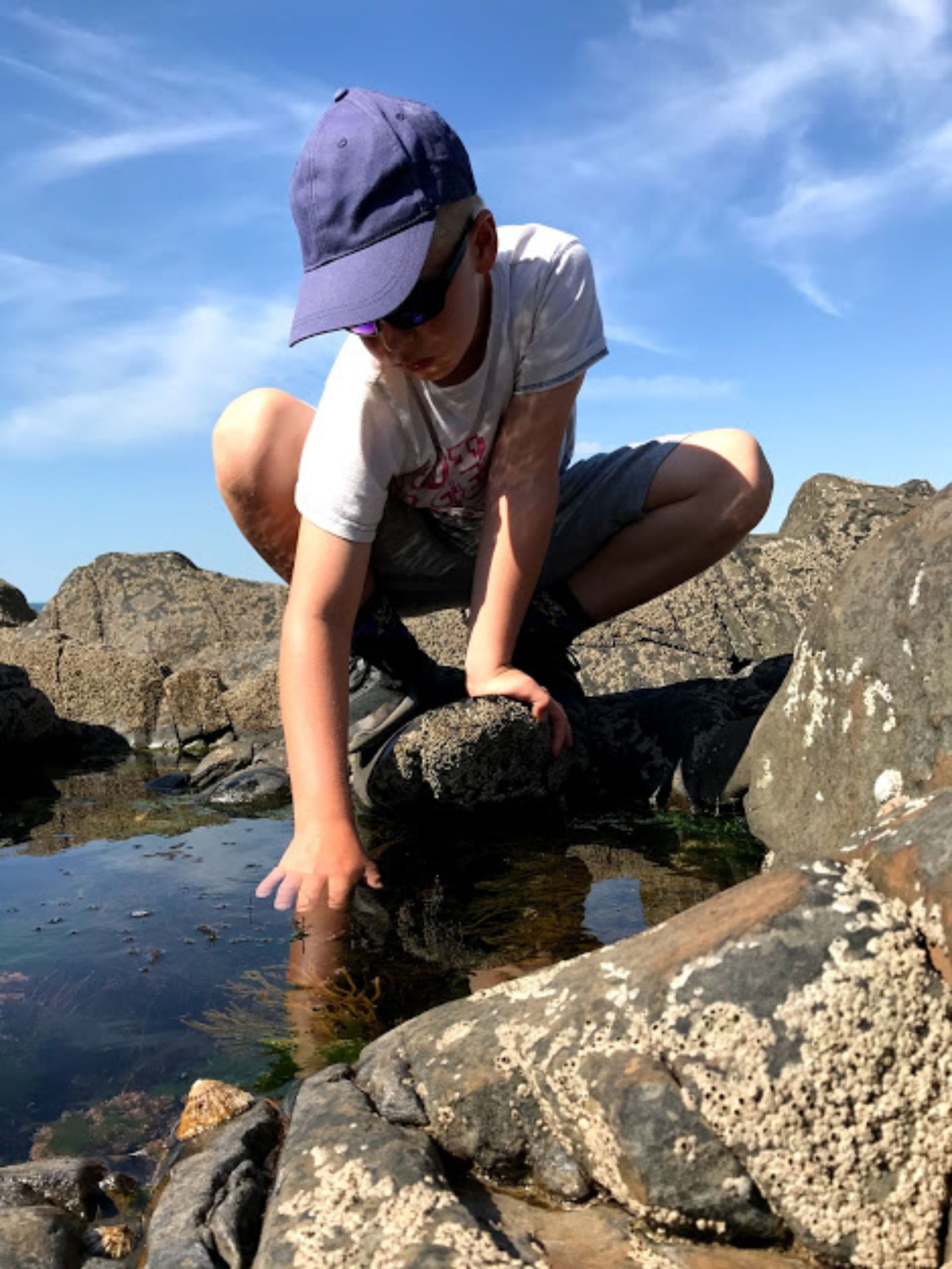
Rock pooling is a great way to spend some time in Westward Ho! plus a perfect way to get kids engaged with nature. The rock pools in Westward Ho! are really easy to access and are teeming with life, especially in the summer months.
Rock Pooling in Westward Ho! can be a relatively sedate activity or a full days adventure! You can see from the Google image the amount of rocks/reef to the South West of the village centre.
Easy rock pooling, but still some amazing rock pools, can be found around the sea water swimming pool off the promenade, 3 hours after high water to 3 hours before high water. Just beside the sea water pool we have the old concrete sewer pipe, pictured, this can be walked on easily (take care as it can get slippy in places, see safety advise). This whole area has some brilliant rock pools to explore and are relatively easy and safe to get too for young ones and those less mobile, marked with white circle on the map.
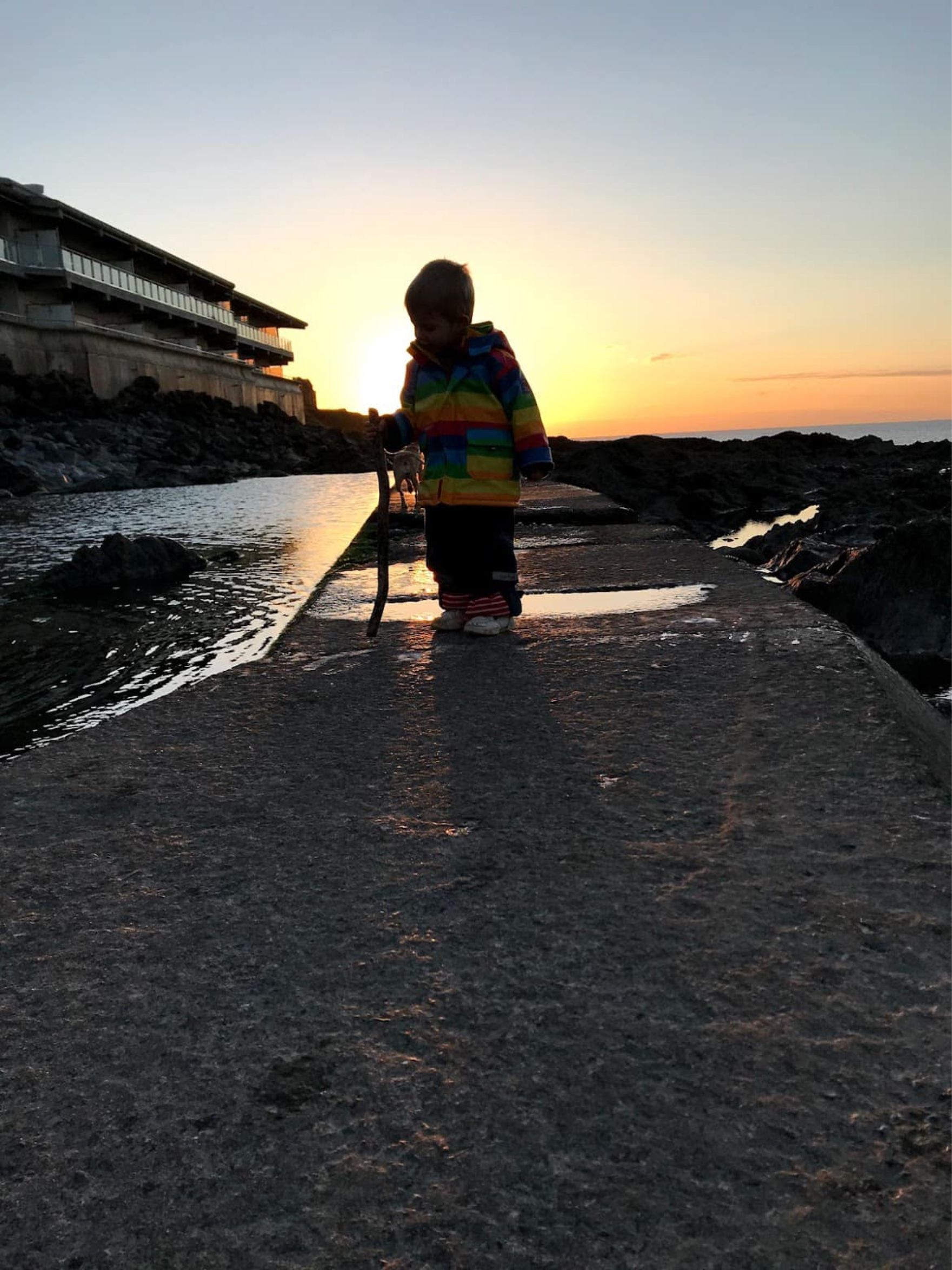
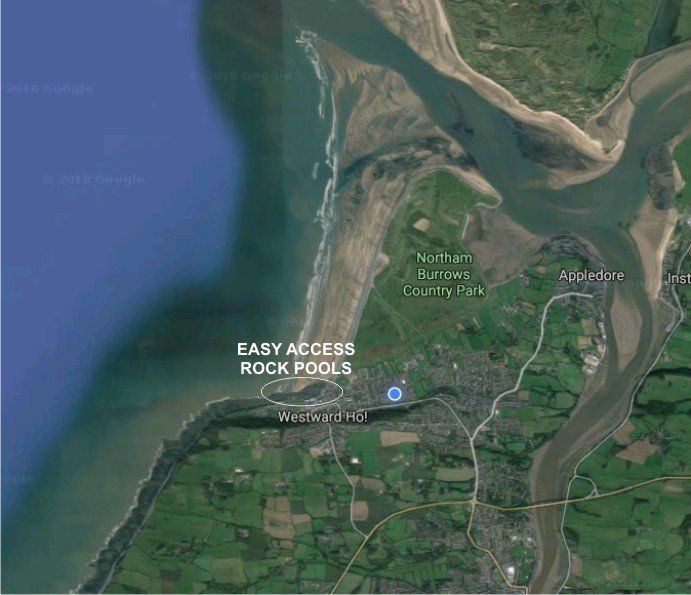
When off Rock Pooling, by following this simple safety advise, it will make sure you get the most out of your day without the need to encounter the RNLI or Coastguards!
-Know the tide times. The best rock pools are uncovered 3 hours after high tide through the low water to 3 hours before high water. If you are heading further out, make sure you are back in plenty of time, the cliffs will cut you off 2-3 hours before high water depending on tide height.
-On the incoming tide always make sure you can see a clear path back. A rising tide can cut you off if you are further out on the rocks. By being aware of this and your surroundings you won't get cut off.
-The rocks and the concrete pipe can get very slippery, good footwear is advised. High heels look amazing but may not be the best!
-Take some suntan lotion. It's very easy to get carried away in the rock pools and get burnt even if not bright sunshine.
-A change of clothing for the little ones is a great idea, they do tend to get a little too close sometimes.
-Take a mobile phone. If you did get into trouble or saw someone else in trouble, call 999 and ask for the Coastguard.
Tide times and sea safety advise is always available from Ho! Surf or North Devon Surf School in the village or online. We want you to have fun safely and learn about the ocean plus it's inhabitants.
In the summer months the rock pools are really clear, if you sit quietly around one you will see so much going on. Shrimps appear and if you put your hands in gently, they will explore your fingers, crabs will walk past, blenny's will swim out, you may see a hermit crab, winkles will start to move and a lot more too. It's only by sitting quiet and studying, that you get to see the best bits of the rock pools.
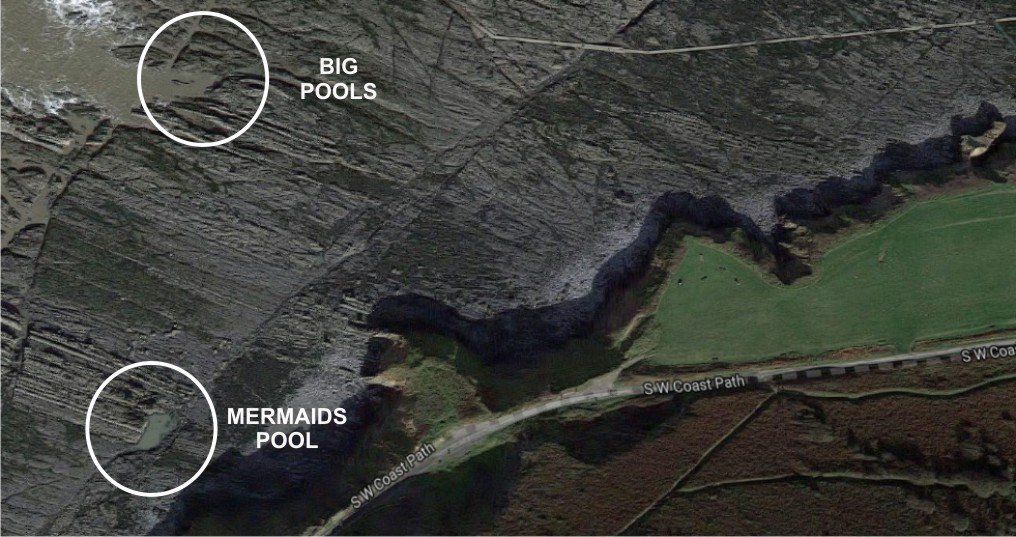
Mermaids Pool is a very big rock pool down the old sewer pipe then across the rocks to the South as shown on the map above. This is a very big rock pool usually with big fish swimming in it. We haven't found a Mermaid yet but still looking!
It's a beautiful area plus always quieter. Please be aware of the tide times and make sure you are back 3 hours before high water.
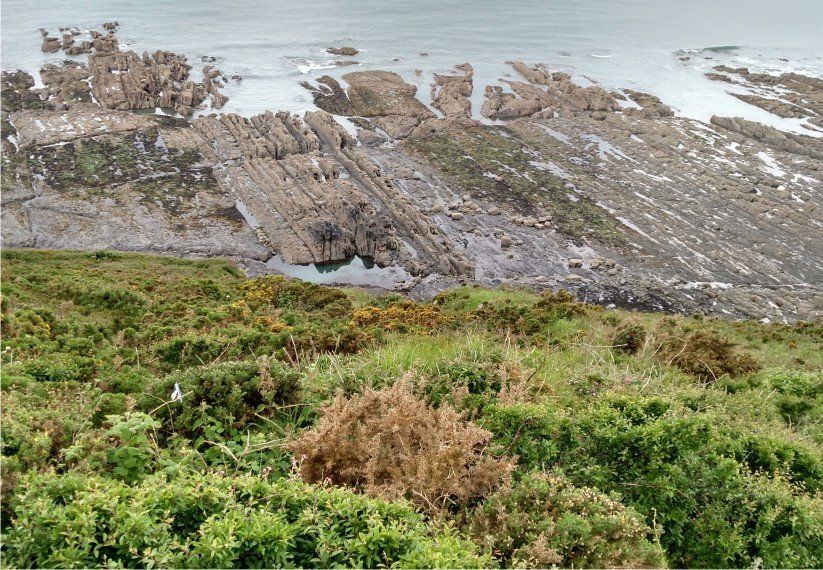
Mermaids pool can be seen beside. This photo was taken from the Look out on Kipling Tors and looks down onto Mermaids Pool. Look at all of these magical big rock pools to explore?
Last, but not least, be careful of this wonderful wildlife, find it, observe and protect it. Turn over rocks carefully and place them back, handle animals gently then return everything.
Try not to use nets, these hurt the wildlife and habitat they need to survive. Try not to keep marine animals in buckets for too long, observe them then put them back unharmed.
By learning how to handle/observe marine life you learn how to protect it.
If you find any washed-up rubbish, give Mother Nature a helping hand and take it home then put it in the bin. Love where we live.
@visitwestwardho Meet the locals…First is the Edible Crab, beautiful colour, powerful and can be found in the rock pools here. https://www.visitwestwardho.co.uk/rock-pooling #visitwestwardho #ediblecrab #aonb #rockpools #northdevoncoast ♬ Crab Rave - Noisestorm

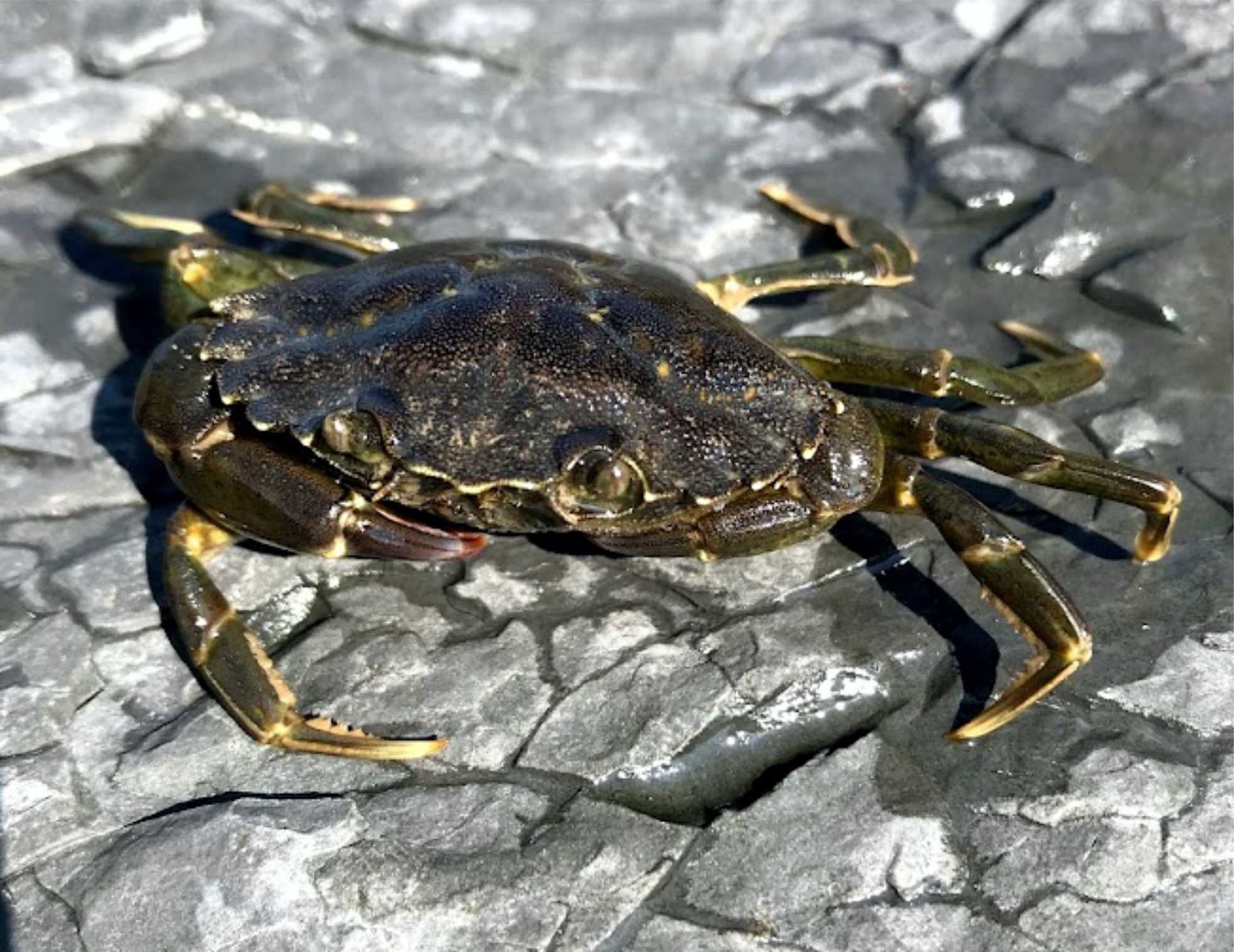
The COMMON SHORE CRAB, or green crab (Carcinus maenas), is a small, aggressive crustacean found in coastal regions worldwide. Recognizable by its greenish colour, though it can also appear red or orange, the shore crab has a robust and slightly convex carapace that spans up to 60mm across. Equipped with five pairs of legs, the first pair being strong pincers, it is an adept scavenger and predator. Found easily in Westward Ho! rock pools this crab is native to these shores. The Common shore crab has significantly expanded its habitat range. It is now found along the coasts of North America, Australia, and South Africa, primarily due to accidental human transportation via ship ballast water. The crab thrives in various environments, from rocky shorelines and sandy beaches to estuaries and tidal pools. Adaptable and resilient, the shore crab can tolerate a wide range of salinities and temperatures, allowing it to colonize diverse habitats. It feeds on mollusks, small crustaceans, and even detritus, playing a significant role in the coastal ecosystem.
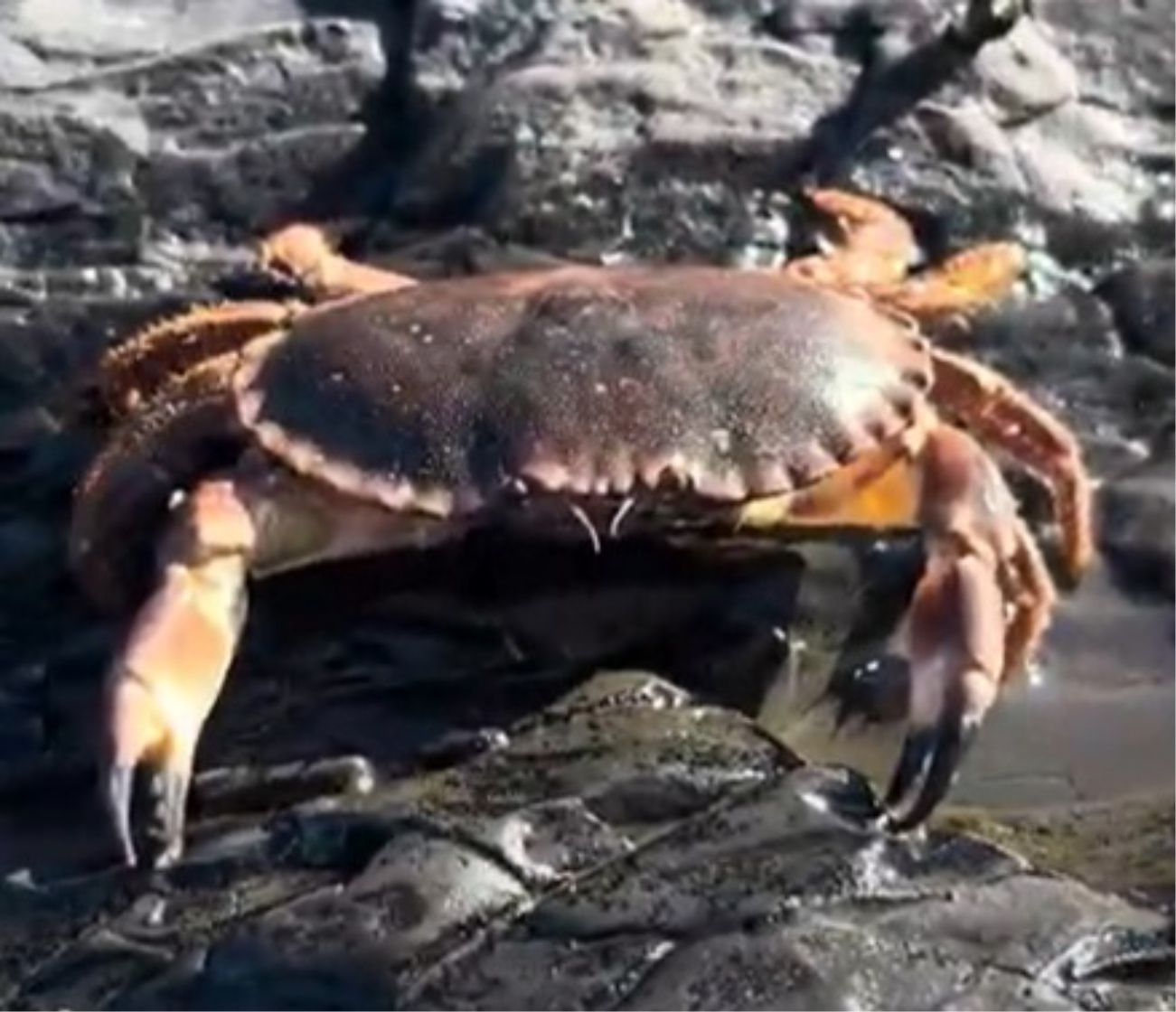
The EDIBLE CRAB, known scientifically as Cancer pagurus, is a robust and well-known crustacean prized for its sweet, succulent meat. Characterized by its large, oval, reddish-brown carapace with a distinctive pie-crust edge, this crab can grow up to 25cm across and weigh over 3kg. The broad, powerful pincers, which often have black tips, are another distinguishing feature. Found predominantly in the northeast Atlantic Ocean and the North Sea, the edible crab inhabits a variety of coastal environments, including rocky shores, sandy bottoms, and kelp forests, juvenile edible crabs do get found in the rock pools here in Westward Ho!, especially in the summer months after breeding time. It prefers waters ranging from the intertidal zone to depths of around 100 meters. During the day, the edible crab often hides in crevices or burrows to avoid predators, emerging at night to forage. It is an omnivore, feeding on a diet of mollusks, smaller crustaceans, and detritus. Its strong pincers enable it to crush the shells of its prey, making it an effective hunter.
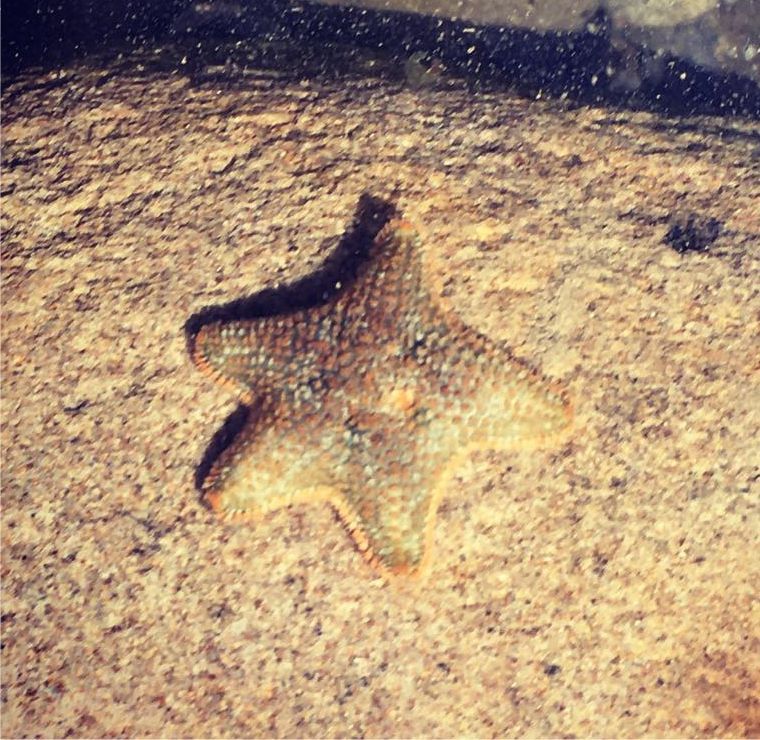
The CUSHION STARFISH (Asterina gibbosa) is a small, five-armed starfish commonly found along the western and southern coasts of the UK. It's easy to spot due to its distinctive, cushion-like appearance, with a puffy body and short, broad arms. The dorsal surface is rough with projecting spines, and its colour varies from pale orange to brown, green, or cream. Cushion stars are typically found in rock pools and crevices on rocky shores. They can also be found on the seabed down to depths of around 100 metres. During the day, they often hide under rocks or in crevices, emerging at night to feed on algae, detritus, and small invertebrates. These starfish are fascinating creatures, as they are protandrous hermaphrodites—meaning they start life as males and later transform into females as they grow. This unique reproductive strategy ensures genetic diversity within their populations. When exploring rock pools, keep an eye out for these charming little starfish, but remember to handle them gently and return them to their habitat after observing. The cushion starfish is a common sight in British waters, adding a touch of wonder to the coastal marine life.
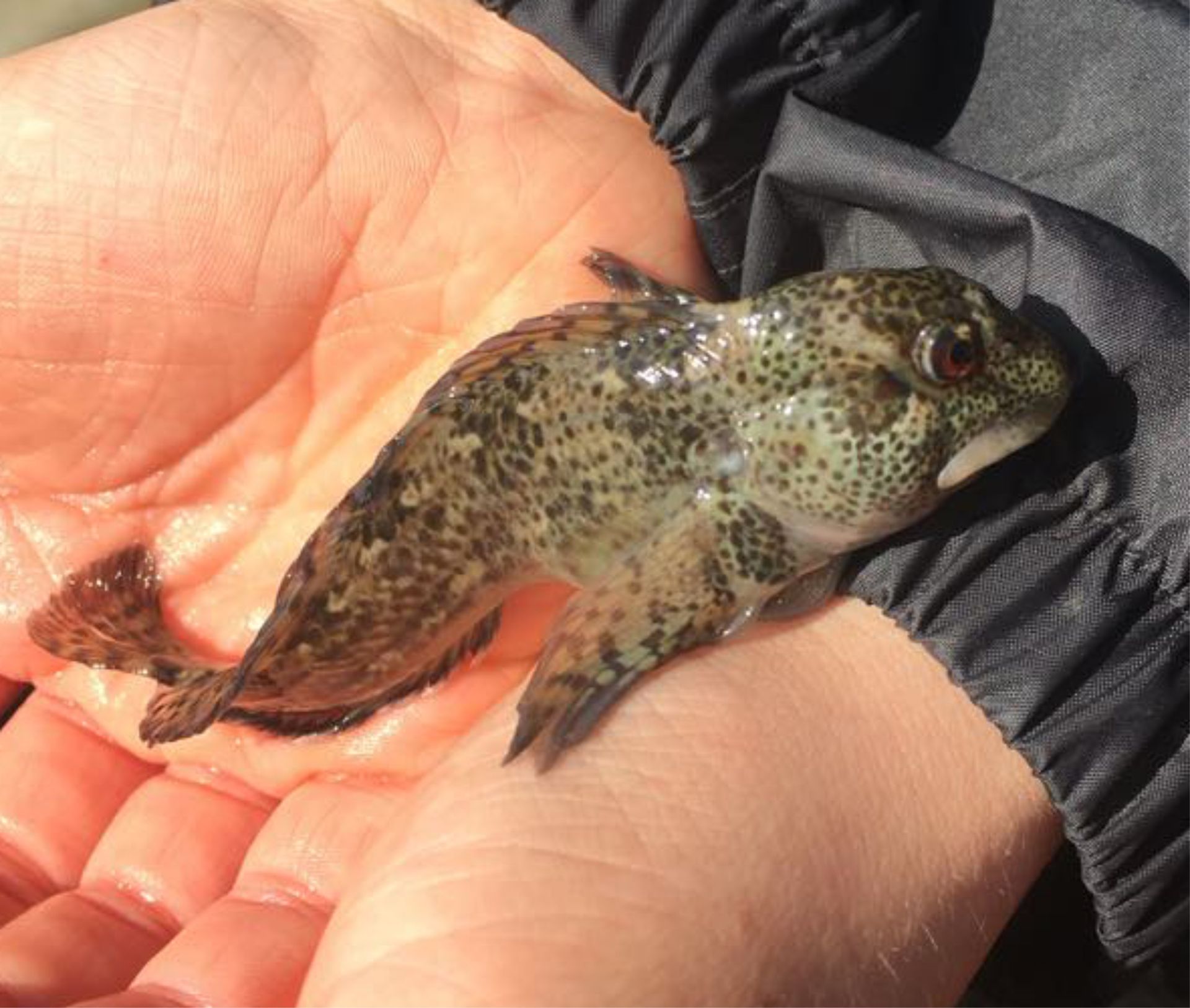
The SHANNY FISH (Lipophrys pholis), also known as the common blenny, is a small, intriguing marine fish found along the rocky shores of the eastern Atlantic Ocean, including the coasts of the UK and Ireland. This fish, which grows up to 16 cm in length, has a robust, elongated body covered in smooth, scaleless skin. Its coloration varies from brown to greenish-brown, with a mottled pattern that provides excellent camouflage against the rocky substrates it inhabits.
Shannies are adapted to life in the intertidal zone, where they reside in rock pools, crevices, and under stones. They are particularly well-suited to these environments, able to tolerate significant fluctuations in temperature and salinity. Their ability to survive out of water for extended periods, as long as they remain moist, enables them to thrive in tidal pools that can become isolated from the sea at low tide.
As omnivores, shannies have a varied diet that includes algae, small invertebrates, and detritus. During the breeding season, males establish and guard nests in crevices, where females deposit their eggs. The male then protects the eggs until they hatch, displaying a high degree of parental care.
Shanny fish are a common and fascinating sight along rocky shorelines, contributing to the rich biodiversity of coastal marine ecosystems.
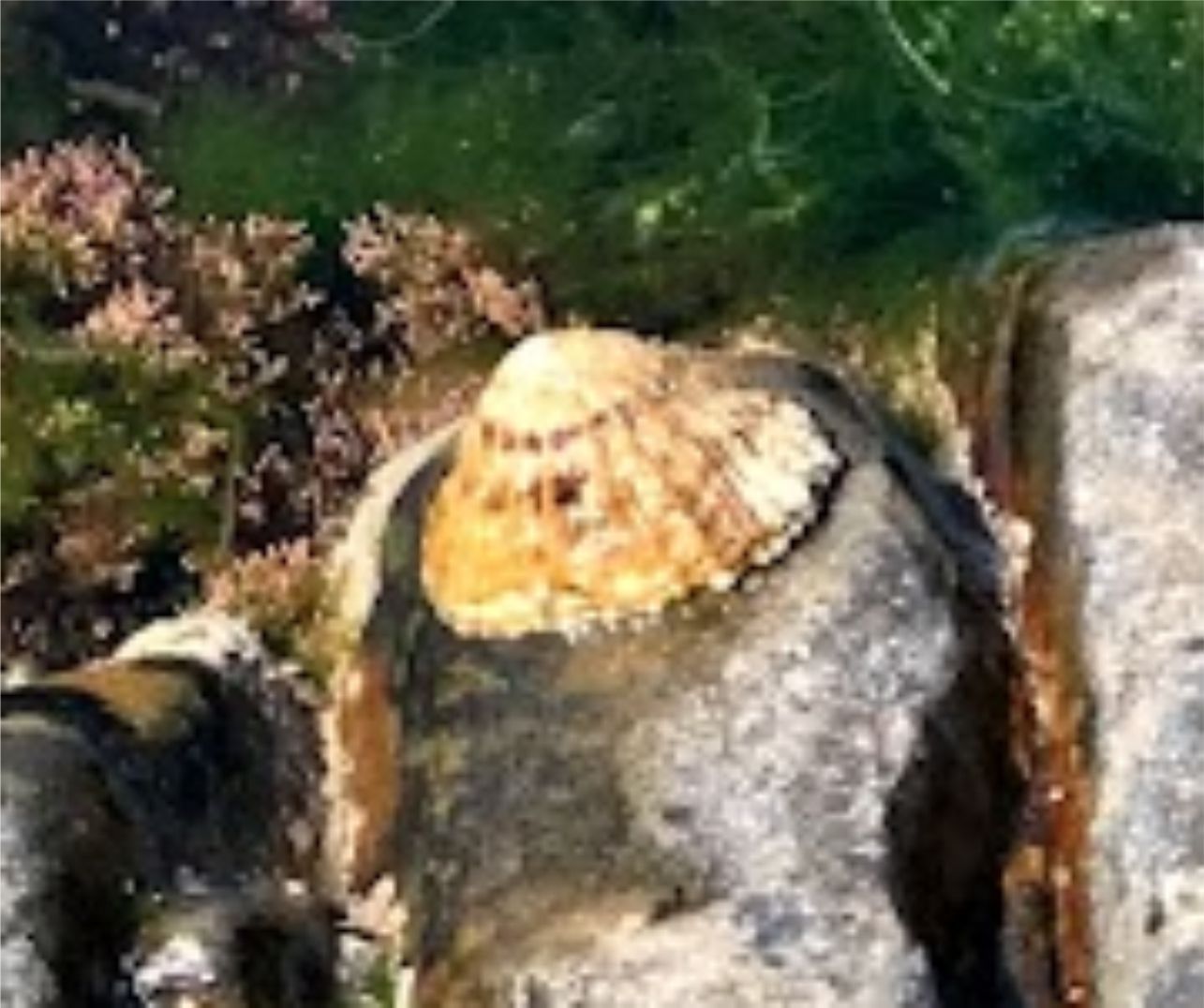
The LIMPET is a fascinating marine mollusk, characterized by its conical shell and strong muscular foot, which it uses to cling tenaciously to rocky surfaces. Limpets belong to the order Patellogastropoda and are commonly found in intertidal zones along the shores of the Atlantic and Pacific Oceans, as well as the Mediterranean Sea. Limpets are highly adapted to their environment, thriving in areas exposed to the crashing waves and tidal fluctuations. They are often found on rocky coastlines, tide pools, and even piers, where they graze on algae and biofilm using their radula—a specialized feeding organ with rows of tiny teeth. These remarkable creatures have evolved to withstand the harsh conditions of the intertidal zone, including desiccation and temperature extremes. One of the most well-known species is the common limpet (Patella vulgata), which is prevalent along the coasts of Western Europe, particularly the UK and Ireland. Limpets play a crucial role in maintaining the ecological balance of their habitats by controlling algal growth and providing food for various predators, including birds and sea stars. Despite their seemingly simple appearance, limpets are remarkable survivors, embodying the resilience and adaptability of marine life in the face of challenging environments. Their presence on rocky shores highlights the intricate and dynamic nature of coastal ecosystems.
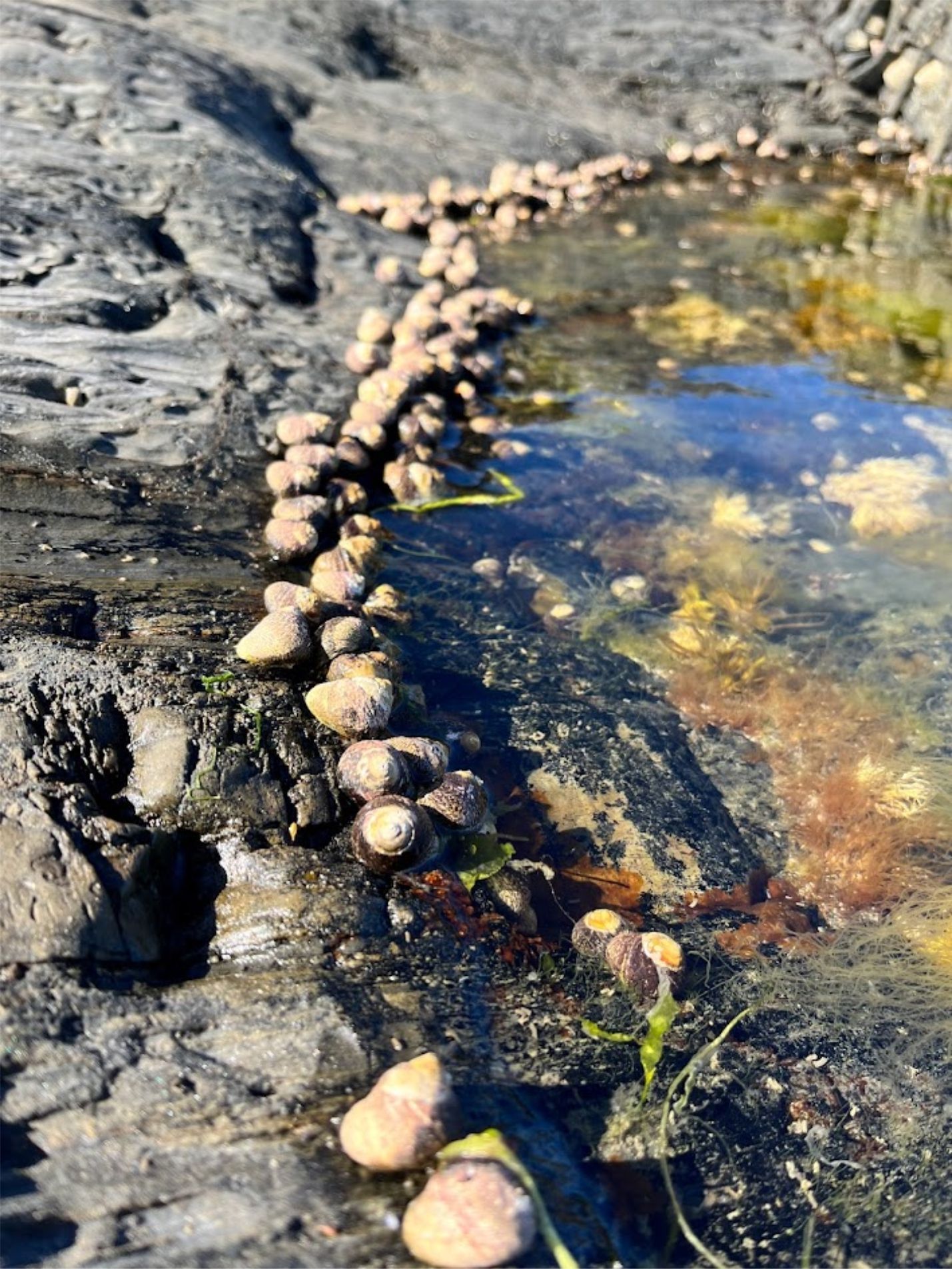
The WINKLE, or common periwinkle (Littorina littorea), is a small marine snail found along the rocky shores and tidal zones of the North Atlantic Ocean, particularly in Europe and the northeastern coasts of North America. Characterized by its sturdy, conical shell, which typically measures 1-2 cm in length, the winkle's shell color can range from dark brown to black, often with faint spiral ridges.
Winkles thrive in the intertidal zone, where they cling to rocks, seaweed, and other hard surfaces. They are highly adaptable and can survive in various environments, from exposed rocky coasts to sheltered estuaries. These gastropods are well-suited to life in the harsh conditions of the intertidal zone, withstanding fluctuations in temperature, salinity, and wave action.
As herbivores, winkles primarily feed on algae, using their specialized radula—a rasping tongue-like organ—to scrape off their food. They play a crucial role in the coastal ecosystem by controlling algal growth and providing a food source for various predators, including birds, crabs, and fish.


